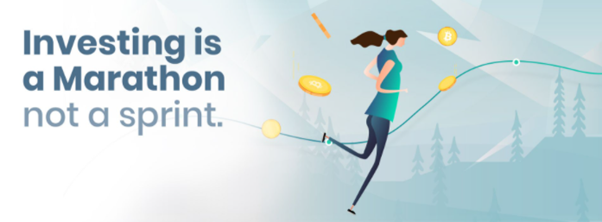Investing in volatile times – it’s all about the big picture.
The key to investing in a volatile environment is to change your mindset from impatient to patient.
Certainty is never 'free'. Even those seeking certainty through seemingly risk-free short-term cash investments (e.g., term deposits), pay heavily over longer-term investment horizons since cash has under performed growth assets and cannot keep pace with inflation.
Don’t waste your time, or money via transaction costs or brokerage, on constant tweaks to your investment strategy. Accept that volatility is the new normal, and then understand how this can be used to your advantage rather than your detriment.
Many people fall victim to a cycle of emotion in this kind of market, but in fact a volatile environment can hold potential for a significant wealth transfer from impatient to patient investors. This is where disciplined investing really pays off. Avoid temptation in chasing what is often something too good to be true and ignores risk. Instead aim for solid returns over the course of a market cycle and the medium term.
Remember, hope is not a strategy.
When we invest on behalf of our clients, we do so with a number of key principles at the front of our minds. Here are our 8 key investment principles we follow to help make volatility work for you rather than against you.
1) Investing, is not speculating.
Speculators are driven by short term goals and the highest possible return. They also tend to ignore the risk taken to earn that return. That is, the general result is the gamble that they either win or lose and in pursuit of this objective, costs and taxes are often casualties.
In contrast, investors are educated and disciplined when deploying their capital. They focus on the strategy that is right for them and adopt sound practices such as the trade-off between risk and return, diversification, appropriate asset allocation and think longer term.
2) Investors are loss adverse.
Ultimately all investors would like a high return with a low degree of risk. Studies illustrate that investors do not think about loss and gain on the same playing field. In fact all investors would rather track sideways than lose $1.
3) Markets are inefficient.
Prices for financial markets are often mispriced at various times of the cycle. This is due to the human psyche of investing. We refer to this as the ‘fear and greed cycle’ where investors either sell off, in many cases quality securities, or bid up securities beyond their actual worth.
It often can feel uncomfortable at the time, however smart investors deploy their capital when something has gone down in value and sell when it has gone up in value. This is best explained by Warren Buffett, one of the world’s most successful investors: ‘be greedy when people are fearful and fearful when people are greedy’.
4) Diversification is essential.
Diversification is often the antidote to many avoidable risks. Therefore, portfolios should be comprehensively diversified across asset classes and sub asset classes.

5) Asset allocation explains performance.
The dominant contributor to portfolio performance is the relative exposure of capital to the various asset classes and sub asset classes. Working with you to determine your required rate of return to meet your goals in critical so we can construct the asset allocation to achieve this target return with the lowest amount of risk.
6) Costs and taxes matter.
The two main sources of wealth destruction are fees and taxes. Concessional tax environments provided to us by the government, such as Superannuation, Allocated Pensions and Transition to Retirement strategies, can play a vital role in wealth creation and retirement.
It is important to note that these structures are not actually investments. Within these concessional tax structures, you have a wide range of investment options to choose, from cash and term deposits to shares.
7) Discipline is paramount.
The media and the financial services industry tend to swamp investors with short term distractions. Numerous studies prove that investors can cause considerable harm to their portfolio by deviating away from their long-term plan if they panic or become a forced seller. It is important to stick to your long-term strategy while being nimble, maintaining liquidity and being prudent about real risks when they present themselves.
8) Understanding risk is crucial.
Risk is central to any discussion of financial markets and investing. In fact without risk there would be no investment return to investors. Having said this, it is important to determine which risks are worth taking, and those that should be avoided.
Cash is considered to be the risk-free return. By including assets other than cash in your portfolio you are inherently taking some degree of risk with the view to achieve a higher return. Over the long term you are generally rewarded for taking on this additional risk however there are times where you are not.
The key to successful investing is ensuring you are getting rewarded appropriately for this risk and actively making changes as market conditions unfold. When constructing portfolios on a forward-looking basis, rather than what we call ‘rear view mirror investing’ basis, it often means taking a contrarian approach. We look to invest in investment that have been oversold, often on the human emotion of fear, and take profits on those that have performed well.
Please do not hesitate to contact us if you have any questions.
Kind regards,
The Coastline Private Wealth Team.







